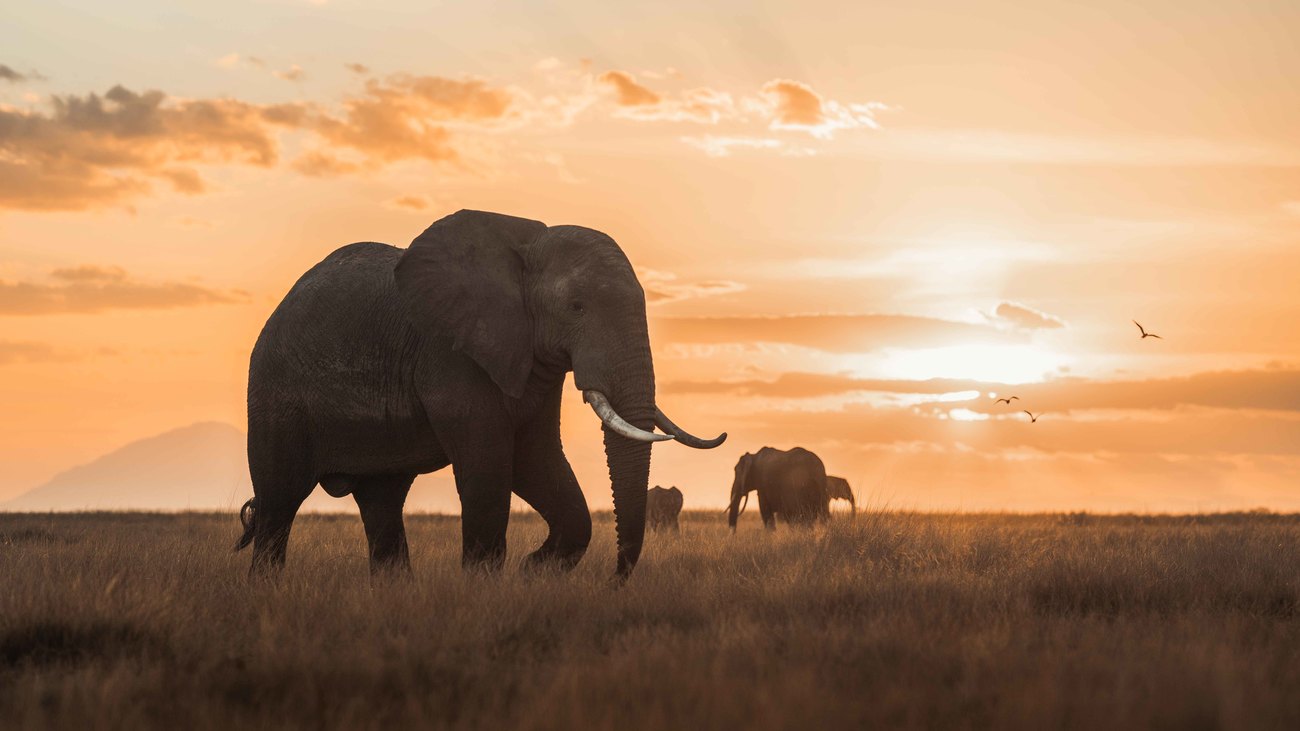Protecting the welfare of elephant populations - Kenya
Partnering with the Kenya Wildlife Service to protect wildlifethe beauty of coordinated efforts to protect the Kitenden Corridor
the beauty of coordinated efforts to protect the Kitenden Corridor

As the sun sets past the magnificent Mt. Kilimanjaro, guests watch as elephants, giraffes, zebras, and antelopes leave Amboseli National Park. “Why are all these animals all headed for the same direction?”, they ask. The tour guides, most of whom double up as their drivers watch this mini-migration happen every evening. “They are leaving the park to be closer to the homes of the community members, where they feel safe.”
A landscape unlike any other
Nestled between the foot of Mt. Kilimanjaro and Amboseli National Park lays the Kitenden Corridor. IFAW, working with the local Maasai community, secures 26,000 acres, part of which makes up the migratory route that allows wildlife to freely and safely move between Kenya and Tanzania. Daily reports provided by IFAW-funded community rangers reveal large numbers of healthy wildlife populations traversing from Tanzania to Kitenden Conservancy and the Amboseli National Park. From April and May 2021, there was an average of 5,524 wildlife sightings in the Kitenden conservancy alone.
How did the Kitenden Corridor become a safe haven for wildlife? The answer lays in the unique partnership between community rangers, IFAW, Kenya Wildlife Service (KWS), and Tanzania National Park Law enforcement officials. Working alongside the local Maasai community, we have developed a specialized system of community rangers who monitor and protect this transboundary landscape. These IFAW funded community rangers, who include IFAW’s Team Lioness, one of the first all-women ranger groups in Kenya, act as the first line of defense against poachers in Amboseli National Park. Through close relationships with the OOGR community, our officers are able to gain insider knowledge and prevent wildlife crime before it happens.
Uniting people and ideas to safeguard wildlife in Kenya and Tanzania
In June 2021, IFAW facilitated the 29th Kenya-Tanzania Cross Border Wildlife Security Meeting. Hosted by Kenya Wildlife Service and funded by the U.S. Bureau of International Narcotics and Law Enforcement (INL), in partnership with the African Wildlife Foundation (AWF), the meeting brought together senior officials from various national parks to discuss wildlife security across ecosystems along the Kenya and Tanzania border. Representatives from the Lusaka Agreement Task Force (LATF) and the United States Embassy based in Nairobi also joined the 3-day meeting to strategize plans for protecting the wildlife ecosystem shared by Kenya and Tanzania. In his opening remarks, James Isiche, the IFAW East Africa Regional Director noted the importance of supporting cross-border meetings between Kenya and Tanzania. He called special attention to the 85 IFAW-funded community rangers who patrol the entire Olgulului Ololarashi Group Ranch (OOGR) and encouraged continual support to their teams. Nancy Kabete, the KWS Deputy Director of Security, expressed how human-wildlife conflicts have surpassed poaching as a major threat to wildlife conservation in Kenya and challenged attendees to produce innovative solutions. Mr. Musaha January, Director of Wildlife in Tanzania, informed the meeting that wildlife crimes in Tanzania are considered economic crimes. He reiterated how key stakeholders need to share information, data, and experiences in protecting these resources. He also highlighted the emerging issues that contribute to loss of wildlife corridors and wildlife conflicts especially between elephants and people. Mike Solis, one of the United States Embassy representatives present at the meeting, explained how the US Government is actively working with the Government of Kenya and the KWS to support in terms of counterterrorism, equipment, and training.
A big thank you to our partners and local communities
The next time you are enjoying a game drive within the Amboseli National Park, or in any other national park around the world, it is best to appreciate the behind-the-scenes efforts by the multi-agency teams on these landscapes. It is through diligent efforts by these teams that we continue to enjoy wildlife and their beauty.
Related content
Every problem has a solution, every solution needs support.
The problems we face are urgent, complicated and resistant to change. Real solutions demand creativity, hard work and involvement from people like you.